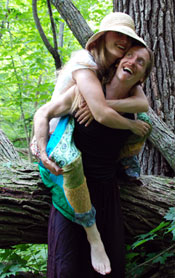Wandering through a book shoppe a few moons ago, we came across a musty old book by John K. Terres, entitled From Laurel Hill to Siler’s Bog, The Walking Adventures of a Naturalist. Among the many observations that John makes is this: “In the South, from February to July or August, the cottontail may have six or seven litters with an average of five young in each. In one summer, she can produce thirty-four young rabbits, and some of these may breed and have young before the long summer has ended. After five years, if Cottontail and all her progeny still lived, 3,779,136 rabbits would be swarming over Mason Farm.”
That’s a lot of bunnies.
He goes on to point out that the red-tailed hawks, the foxes, the feral dogs, the snakes, the weasels and the hunters all work to keep the cottontail race sustained at fairly even numbers.
This fact can be blithely ignored. After all, we’ve all heard about the ‘balance of nature’. Yet, if we pause for a moment to consider what that means, it should leave us astounded. How is it that so many factors can interweave so perfectly, keeping the cottontail alive through innumerable generations? Indeed, it is from a few years back (37 million or so to be more precise), in the Oligocene period that fossils of a critter named Palaeolagus have been found. Palaeolagus was a lagomorph (that’s what a rabbit is — not a rodent, as is often thought to be the case), and probably looked much like our modern rabbits. So cottontail-like creatures have been living in this state of balance for a rather long time.
It’s not just the rabbits benefiting from this. The hawks and snakes and weasels benefit as well, as do all the plants and insects and other animals who are woven together and interconnected via tooth and blood and unfolding leaf. How amazing it is that somehow, without a guidebook or instructions, every animal and plant and weather system and disease (the list could go on) plays its role, with the result being long periods of stability where different species get their chance on the stage of Life on Earth.
Of course, the system collapses now and again, but each time new species have filled the void left by others, so that a look back at the history of life on Earth is a beautiful progression of the appearance and disappearance of species. If history continues as it has, we too will play our part and then disappear.
This book on our shelf, recounting the rambling adventures of a Homo sapiens called John K. Terres, will continue to grow ever mustier, its pages yellowing and finally crumbling away, to be recycled into the bodies of future species that don’t yet exist, even in our dreams.
Visit our Adventure Journal, and learn about our wilderness awareness/martial arts classes here and our Wild Living classes here.
Posted on January 6th, 2010 by Kenton and Rebecca
Filed under: Nature Inspiration




Sounds like you found a good book. I love the bunnies, but I’m glad that the one that ate all my new shrubs last winter doesn’t seem to be around this year. As someone once said, the whole reason for rabbits is to be someone else’s food.
Nice photo of the cute bunny! Sounds like a good book. Of course, the spanner in the works of “Balance of Nature” is us. Except for our penchant for killing each other, most of our enemies have been held at bay, allowing our population to balloon out of control to nearly 7 billion. Global warming, habitat loss, the emptying of the oceans, pretty much all of the planets ills are a result of our escape from the balance of nature.
Hello Jackie,
Ha! Wouldn’t want to hear that if we were rabbits, but it sure seems like that’s the way of things! =) Luckily they’ve been given some pretty nice tools for getting away from predators!
Hi barefootheart,
We’d love to hear more dialog on this — though we would tend to agree with you on all counts, it will be interesting to see whether the balance of nature catches up with us after all. Thus far in modern human history, we’ve remained relatively unscathed from major catastrophes (speaking on the scale of a large meteorite impact or major climate shift or self-induced nuclear holocaust). Our ancestors lived through a glacial period or two, but it sounds like they were relatively mild ones. How would our species fare if we were hit with a heavy glacial period, or with the global warming that you mention?
In no way are we trying to exonerate humans from their actions in regards to our planet, but it’s interesting to note that the history of our planet shows cataclysmic extinction after cataclysmic extinction. One would think that we humans would have noticed that and would be taking some steps to see if we can increase our chances of sticking around, but instead it appears that we’re all too eager to speed the process along. This supports the theory that perhaps humans aren’t really that intelligent after all =)
One of my favorite things to find are old natural history books. I’ve added a few to my collection over the years and I am always fascinated by their content and the unique writing styles of the day.
There is a great book by Barbara Kingsolver called “The Prodigal Summer, a Novel” that delves into the relationship of predators and prey, it is set in the Appalachian Mountains and follows the life of a wildlife biologist living in the mountains who studies the coyotes residing there. If you’ve not read it already, I’m sure you would love it.
Rabbits like all small prey animals are a necessary part of the food chain. We have a pack of coyotes that live on our farm. The hunters in the area are always asking to hunt them. I deny them. While I am not against hunting, in fact my entire family hunts. I just can’t bring myself to let them hunt these important predators. Even with the presence of these coyotes the rabbits and squirrel are plentiful.
Hello MObugs,
We were so happy to hear your policy on the coyotes. While we also respect hunting, we agree that predators like the coyotes should be given a break. A friend of ours who owns a farm nearby was just expressing this same sentiment the other day — in her case, she wants to keep the coyotes around because they help her keep the rabbits out of her garden! Plus, to hear their haunting calls deep in the night is an amazing experience.
Kenton wrote a post about an encounter with a coyote on his other blog — http://kentonwhitman.com/2008/05/15/the-coyote/ It might be interesting to you.
Also, thank you for the tip on the book. This is definitely one we’re going to find and read!
It’s always so good to hear your voice here =)